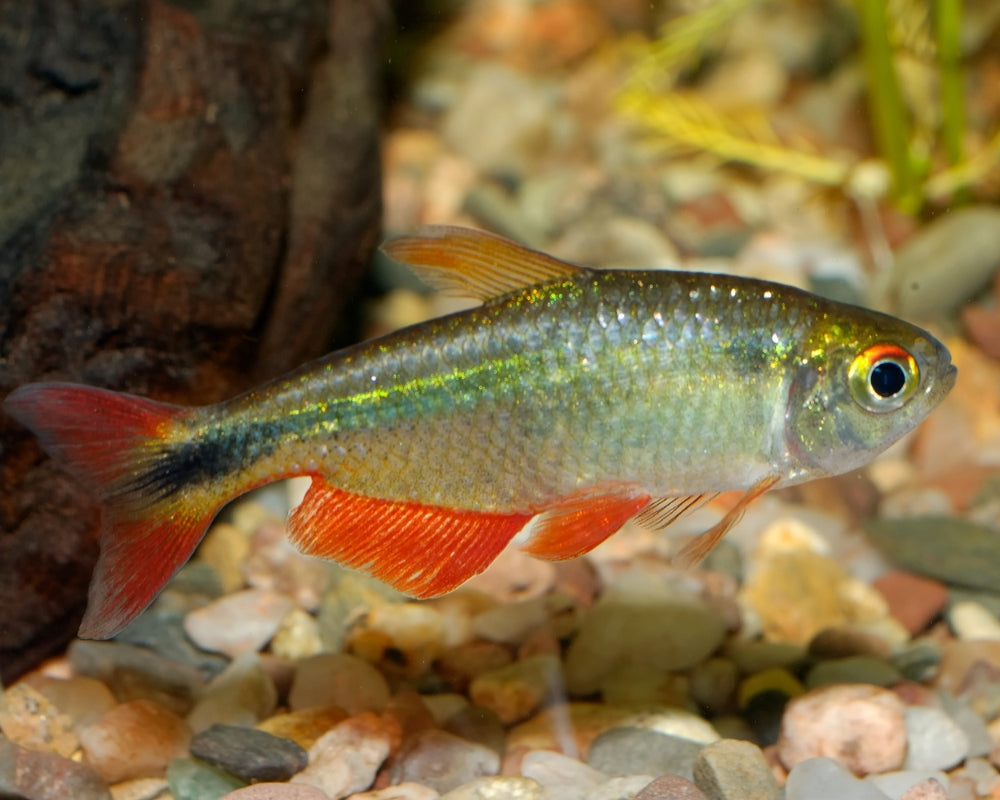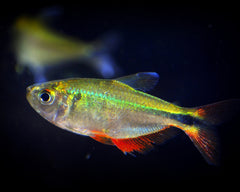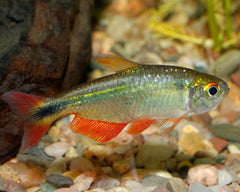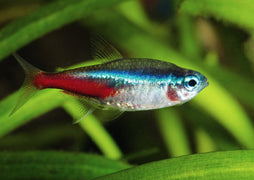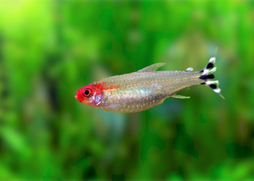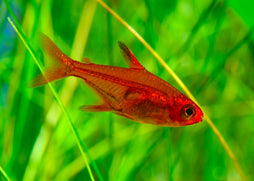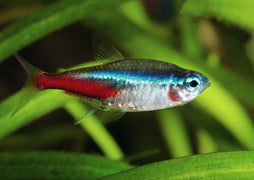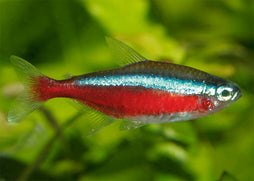Description
The Buenos Aires Tetra (Hyphessobrycon anisitsi) is a hardy and active freshwater fish native to South America’s Paraná River basin. Known for its vibrant silver body accented with bright red fins, this species is a popular choice for community aquariums due to its peaceful temperament and adaptability. The Buenos Aires Tetra is a schooling fish that adds dynamic movement and colour to medium to large tanks, thriving in well-maintained environments with stable water conditions.
Features of Buenos Aires Tetra
• Silver body with striking red fins on dorsal, anal, and caudal areas
• Grows up to 6 cm in length
• Active, schooling species best kept in groups of six or more
• Hardy and adaptable to a wide range of water parameters
• Known for peaceful behaviour but may nip fins of slow-moving fish
• Lifespan typically ranges from 4 to 6 years with proper care
The Best Aquarium Size for Buenos Aires Tetra
Buenos Aires Tetras require spacious tanks to support their active swimming and schooling behaviour. A minimum tank size of 80 litres is recommended for a small school of six or more. Larger aquariums provide better water stability and allow more natural behaviour, including schooling and foraging.
Tank Mate Compatibility for Buenos Aires Tetra
This tetra generally coexists well with other peaceful, similarly sized community fish. Suitable tank mates include:
• Corydoras Catfish
• Harlequin Rasbora
• Zebra Danio
• Cherry Barb
• Otocinclus Catfish
Diet for Buenos Aires Tetra
Buenos Aires Tetras are omnivores with a flexible diet. They thrive on high-quality flake or pellet foods supplemented with live or frozen options like bloodworms, brine shrimp, and daphnia. Including vegetable matter such as blanched spinach or zucchini supports their overall health and coloration. Feed small portions 2–3 times daily, ensuring food is consumed quickly to maintain water quality.
Aquarium Setup for Buenos Aires Tetra
Aquarium Filtration
Effective biological and mechanical filtration is necessary to keep the water clean and well-oxygenated. Sponge filters or canister filters work well for maintaining stable water conditions.
Aquarium Plants
Use hardy plants such as Java Fern, Anubias, and Amazon Sword to create a natural environment. Provide some floating plants to diffuse lighting and offer shelter.
Aquarium Lighting
Moderate lighting supports plant growth and enhances fish coloration without causing stress.
Aquarium Heating
Maintain a temperature range of 22–26°C to mimic natural tropical conditions. Avoid rapid temperature fluctuations.
Aquarium Substrate
Fine gravel or sand substrates work well, allowing natural foraging and supporting plant roots.
Aquarium Decorations
Incorporate driftwood, smooth rocks, and caves to provide hiding spots and establish territory within the tank. Ensure decorations do not restrict swimming space for this active species.


